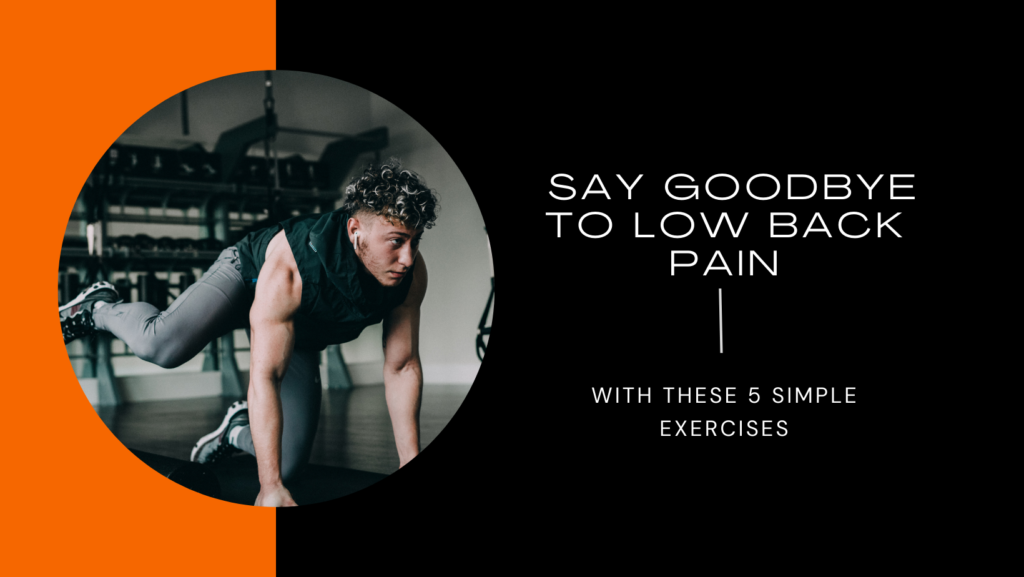Low back pain is a common problem for people who spend extended periods sitting at a desk.
This is because prolonged sitting can cause an imbalance of muscle tone or weakness in the back muscles supporting the spine and hips due to being in a lengthened state for excessively long periods of time. Conversely, the muscles at the front of the body, the quads, become tighter, pulling the pelvis down and hip flexors which come from the low back right where you’re experiencing the discomfort and attach to the front of the thighs, leading to pain and discomfort.
Here are five simple exercises to try!
So, if you suffer from low back pain caused by sitting at a desk for long hours, give these 5 Simple Exercises a go to Relieve the Symptoms by Strengthening the Core, back extensors, Glutes, and Hamstrings whilst you free off the quads and hip flexors.
Here are 5 specific exercises to try:
Cat-Cow Stretch:
This exercise helps to warm up the spine and improves mobility.
The couch-stretch:
Shortened, tight muscles at the front of the legs caused by sitting for long periods pull the pelvis down from the front and can cause lower back aches, leading to back pain. Using the couch stretch can alleviate this strain by stretching the muscles at the front of the legs, namely the quads and hip flexors.
Plank:
This exercise strengthens the core muscles, which support the spine and help prevent low back pain.
Bird Dog:
This exercise helps to strengthen the muscles in the lower back and improves anti-rotational stability.
Waiters bow good mornings:
When we sit for long periods, the muscles on the back of the legs, the hamstrings and the glutes become lengthened, providing very little stabilisation support to the pelvis once we’re standing back up again. By doing the waiter’s bow, we are helping strengthen the upper back muscles and, at the same time, resetting the hamstring and glutes back to the set length to help restabilise the pelvis.
How do they help?
Stabilising the spine and hips by strengthening the core, glutes and hamstrings whilst releasing the hip flexors and quads, you are able to reduce the strain on the lower back.
This is only a short-term solution, however!
If this helped, you should then begin an exercise regime that includes RDLs/Deadlifts, glute bridges, curl-ups, side planks, bird dogs and some upper back work which will bring balance back to your body.
If you want to create a more comprehensive exercise plan, don’t hesitate to contact me for help. Together, we can develop a personalized exercise routine that will help you get back to doing what you love pain-free. Take the first step towards a healthier, more active life by booking a consultation today. BOOK NOW
Remember to consult a doctor or physical therapist before starting any new exercise programme, especially if you have a history of back pain.

